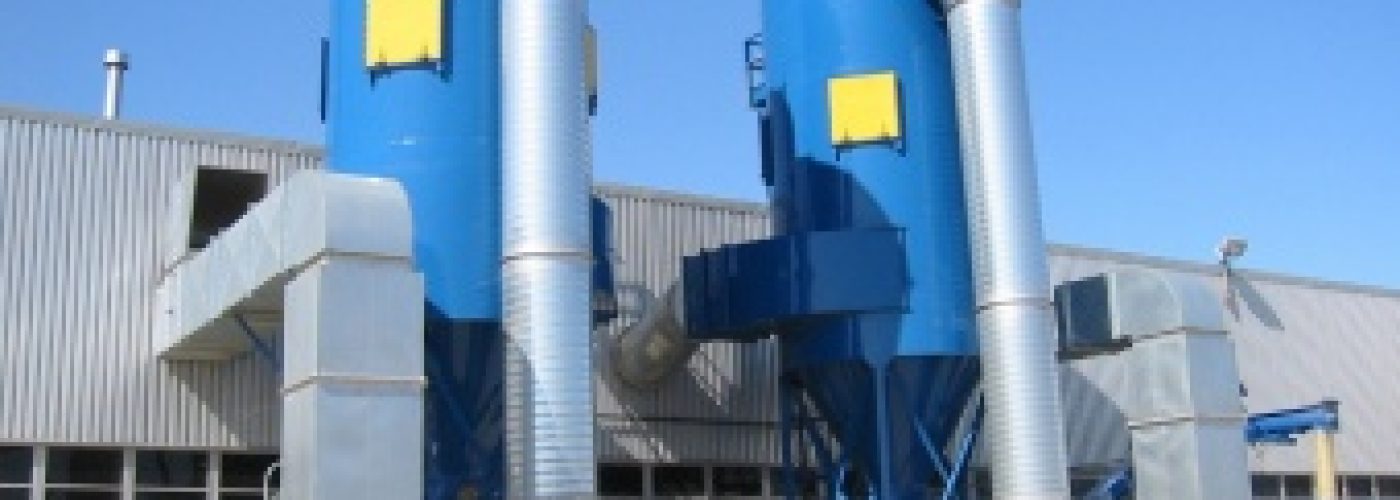Industrial plant personnel will need the help of industrial dust collectors to ensure that employees and the working environment is safe for general working conditions and to meet policies set by the regulating bodies. These devices can be quite pricey thus it makes it a prime concern for most businesses to take care of them to avoid any unnecessary part replacements. This article will present some tips to make sure that the industrial dust collector is operating at top safety performance level.
Use deflagration Protection
There are times wherein a dust collector handles dust that may combust. In cases such as this the industrial dust collector must be equipped with deflagration protection. A common, inexpensive and passive method is by use of venting. When predetermined pressures are reached inside the collector, an explosion vent opens which will then allow the extra pressure and fireball from the deflagration to exit to an area that will not disrupt operations nor will damage any devices.
There exists flameless vent which consists of a casing that will include a panel of a mesh that can withstand high temperatures while also absorbing heat and flame. The way it will be used is by installing it over a standard explosion vent. Whenever a combustion happens, the vent will open while lowering the pressure and direct the fireball into the casing mentioned earlier. There will also be mesh layers whose job is to absorb the heat and flame while and then allowing a bigger portion of the pressure wave to pass easily towards a safe zone outside the working environment. The mechanism will allow venting in the conventional sense to be completed indoors. Otherwise, it may be able to endanger staff or add unpredictable secondary explosions. It is worth noting however that there are indeed other protection devices that currently exist in the market. Ultimately, the best recourse may be to work with your industrial dust collector expert or representative to search the best that fit your requirements.
Study capabilities of your collector
It is vital for plant staff to be able to understanding the levels of pressure that the industrial dust collector is capable of. Other important decisions that should be pondered upon are the specification and selection of vent sizing. By comparing these venting vessel sturdiness and matching it to the deflagration strength and vent burst pressure you will be able to effectively protect your industrial dust collectors from deflagration.
Check the ductwork
Fire protection agencies around the world will often have the same opinion. They will require that should be protection for all the ductwork and the safety processes upstream of the industrial dust collector. Configure the ducting in such a way that it will be equipped with a flow-activated isolation valve that will then function as a protection of downstream work areas and processes. It will be protected from the propagation of flames and the excess pressure ported from inlet duct when deflagration occurs in a dust industrial dust collector.
During the occurrence of such deflagration, the pressure wave will shut the valve off which will then prevent any passage of fires, flames, and smoke up to areas far upstream from the valve. In this case, the valve will then latch shut and can only be manually opened. If the mechanism is activated, there will be components in the valve which can be damaged and only with a thorough inspection can suffice before returning the valve back into service.
The hoppers should not be used to collect dust
A rookie mistake that can be often done by most that are starting out in manufacturing is the use of hoppers as a means to store dust. It should be understood that the hopper’s sole purpose is for funnelling process dust towards the storage bins. The dust that would soon fill up the hopper will surely create a potential fire or deflagration risk. Another point to remember is that the dust in the hopper can also deflate the industrial dust collector’s performance by obstructing the system and preventing the pulse-cleaning from completing the task it was intended to. The self-dumping hoppers can be an easy dust disposal mechanism all the while protecting against unwanted dust leaks among the collector and hoppers.
Pulse-cleaning controls is an option
The industrial dust collector’s system for cleaning is designed to work in hand in hand with filter design. There are some cleaning controls that can provide an easy way to keep filters clean without the added hassle of having to maintain it on a daily basis.
The continuous cleaning option can be used for the porous kind of dusts, that may included silica and other minerals, high dust loading applications like thermal spray or plasma cutting, or some of the lighter ones such as paper fines and fumed silica.
There are also on-demand cleaning which are recommended for almost all of the dust types. There is a setting monitor that causes a difference in pressure from the clean-air section all the way to the dirty-air filter section of the collector. This will allow the operator to set a small range of pressures to be used and pause the cleaning of the cartridge. This setting can also use the smallest amount of pressurized air and can afford you the optimum filter cleaning efficiency and will allow the filter to last longer than usual.
When all else fails, you can opt for down time cleaning which can allow for pulsing at timed intervals at the end of each operational sting. This can also be done after completing a batch process or after an disruption in the system that may diminish the performance of the filters. After the period, the unit can now be turned off completely. This is a vital capability because cleaning cartridges beyond what is necessary, especially during operation can not only cause higher emissions but can also shorten the life of the cartridges and force you to spend more on energy simply because of overusing of the compressed air.





